Whirlpool WFAU, WFAR, WFAT, WFLU, WFLR Installation Instructions
...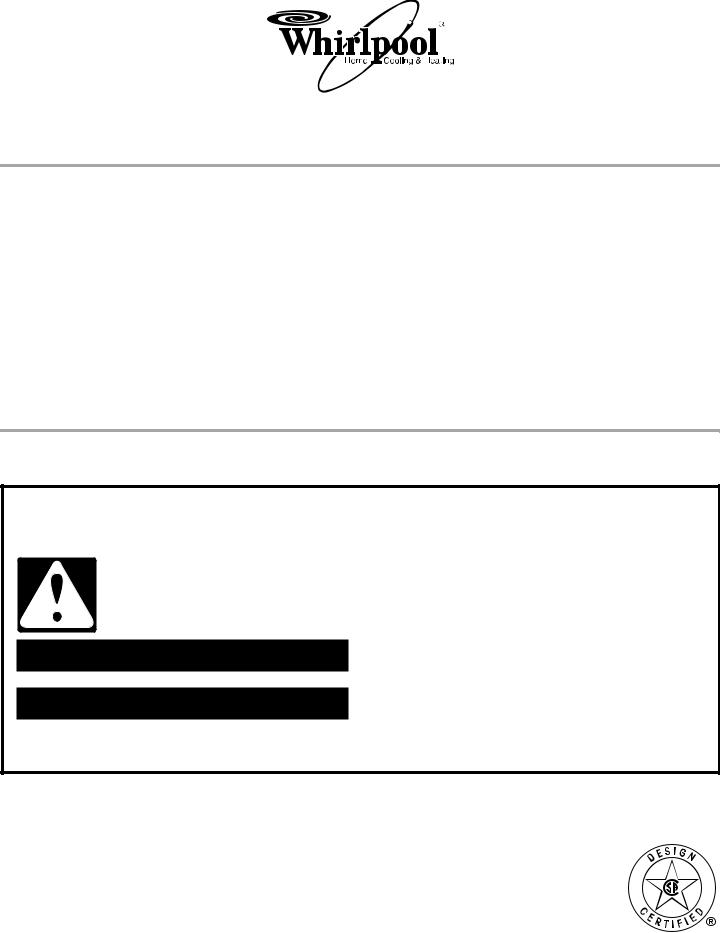
80% GAS FURNACE INSTALLATION INSTRUCTIONS
Table of Contents
GAS FURNACE SAFETY................................................................ |
1 |
INSTALLATION REQUIREMENTS ................................................ |
3 |
Tools and Parts ............................................................................ |
3 |
Location Requirements................................................................ |
4 |
Installation Configurations ........................................................... |
5 |
Ductwork Requirements .............................................................. |
7 |
Electrical Requirements ............................................................... |
7 |
Gas Supply Requirements ........................................................... |
7 |
Venting Requirements.................................................................. |
7 |
INSTALLATION INSTRUCTIONS .................................................. |
9 |
Inspect Shipment ......................................................................... |
9 |
Plan Vent System......................................................................... |
9 |
Determine Vent Pipe Direction................................................... |
12 |
Connect Venting......................................................................... |
14 |
Install Duct Work ........................................................................ |
14 |
Filter Specifications .................................................................... |
14 |
Make Electrical Connections ..................................................... |
15 |
Make Gas Connections.............................................................. |
16 |
Check the Furnace Input Rate (if required)................................ |
17 |
Adjust the Furnace Input Rate (if required) ................................ |
17 |
Complete Installation.................................................................. |
18 |
Shut Down.................................................................................. |
19 |
SEQUENCE OF OPERATION ...................................................... |
19 |
Heating ....................................................................................... |
19 |
Fan On ........................................................................................ |
19 |
Cooling ....................................................................................... |
20 |
CONTROLS ................................................................................... |
20 |
TROUBLESHOOTING .................................................................. |
21 |
ASSISTANCE OR SERVICE......................................................... |
24 |
Accessories ................................................................................ |
24 |
GAS FURNACE SAFETY
Your safety and the safety of others are very important.
We have provided many important safety messages in this manual and on your appliance. Always read and obey all safety messages.
This is the safety alert symbol.
This symbol alerts you to potential hazards that can kill or hurt you and others.
All safety messages will follow the safety alert symbol and either the word “DANGER” or “WARNING.” These words mean:
 DANGER
DANGER
 WARNING
WARNING
You can be killed or seriously injured if you don't immediately follow instructions.
You can be killed or seriously injured if you don't follow instructions.
All safety messages will tell you what the potential hazard is, tell you how to reduce the chance of injury, and tell you what can happen if the instructions are not followed.
Whirlpool® Models
WFAU, WFAR, WFAT, |
Whirlpool® Home Cooling and Heating |
14610 Breakers Drive |
|
WFLU, WFLR, WFLT |
Jacksonville, FL 32258 |
46924B008

IMPORTANT SAFETY INSTRUCTIONS
■Use only with type of gas approved for this furnace. Refer to the furnace rating plate.
■Install this furnace only in a location and position as specified in the “Location Requirements” section of these instructions.
■Provide adequate combustion and ventilation air to the furnace space as specified in the “Venting Requirements” section of these instructions.
■Combustion products must be discharged outdoors. Connect this furnace to an approved vent system only, as specified in the “Venting Requirements” section of these instructions.
■Never test for gas leaks with an open flame. Use a commercially available soap solution made specifically for the detection of leaks to check all connections, as specified in the “Make Gas Connections” section of these instructions.
■Adequate clearance must be provided around the vent-air intake terminals.
■Always install furnace to operate within the furnace’s intended temperature-rise range with a duct system which has an external static pressure within the allowable range, as specified in the “Complete Installation” section of these instructions. See furnace rating plate.
■When a furnace is installed so that supply ducts carry air circulated by the furnace to areas outside the space containing the furnace, the return air shall also be handled by duct(s) sealed to the furnace casing and terminating outside the space containing the furnace.
■A gas-fired furnace for installation in a residential garage must be installed as specified in the “Location Requirements” section of these instructions.
■The furnace is not to be used for temporary heating of buildings or structures under construction.
■The furnace shall be installed so the electrical components are protected from water.
■Furnaces for indoor installation on combustible flooring shall not be installed directly on carpeting, tile or other combustible material other than wood flooring.
SAVE THESE INSTRUCTIONS
 WARNING:
WARNING:
FIRE OR EXPLOSION HAZARD
Failure to follow safety warnings exactly could result in serious injury, death or property damage.
—Do not store or use gasoline or other flammable vapors and liquids in the vicinity of this or any other appliance.
—WHAT TO DO IF YOU SMELL GAS
•Do not try to light any appliance.
•Do not touch any electrical switch; do not use any phone in your building.
•Leave the building immediately.
•Immediately call your gas supplier from a neighbor’s phone. Follow the gas supplier’s instructions.
•If you cannot reach your gas supplier, call the fire department.
—Installation and service must be performed by a qualified installer, service agency or the gas supplier.
2
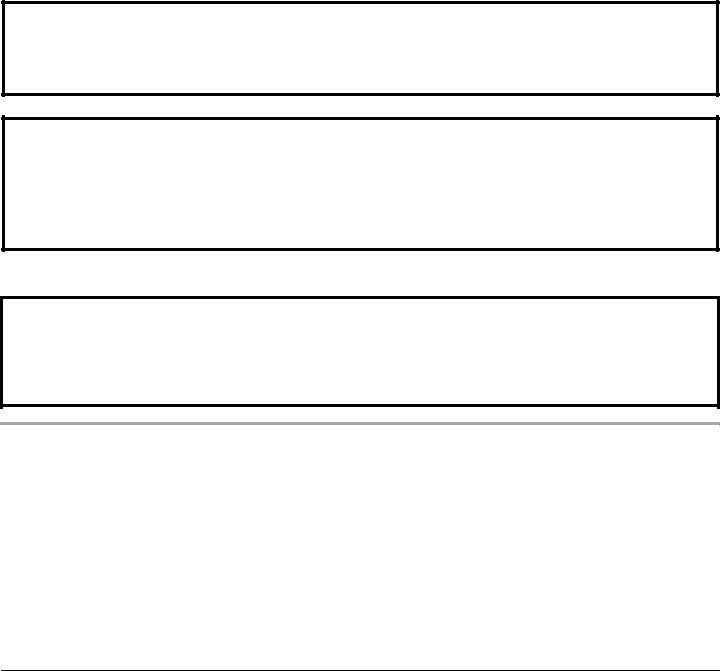
WARNING: Gas leaks cannot always be detected by smell.
Gas suppliers recommend that you use a gas detector approved by UL or CSA.
For more information, contact your gas supplier.
If a gas leak is detected, follow the “What to do if you smell gas” instructions.
The California Safe Drinking Water and Toxic Enforcement Act requires the Governor of California to publish a list of substances known to the State of California to cause cancer, birth defects, or other reproductive harm, and requires businesses to warn of potential exposure to such substances.
WARNING: This product contains a chemical known to the State of California to cause cancer, birth defects, or other reproductive harm.
This appliance can cause low-level exposure to some of the substances listed, including benzene, formaldehyde, carbon monoxide, toluene, and soot.
ADDITIONAL SAFETY INFORMATION
In the State of Massachusetts, the following installation instructions apply:
■Installations and repairs must be performed by a qualified or licensed contractor, plumber, or gasfitter qualified or licensed by the State of Massachusetts.
■If using a ball valve, it shall be a T-handle type.
■A flexible gas connector, when used, must not exceed 3 feet.
INSTALLATION REQUIREMENTS
These instructions are intended as a general guide only for use by qualified persons and do not supersede any national or local codes in any way. Compliance with all local, state, or national codes pertaining to this type of equipment should be determined prior to installation.
Read this entire instruction manual, as well as the instructions supplied in separate equipment, before starting the installation.
The installation of the furnace, wiring, warm air ducts, venting, etc. must conform to the requirements of the National Fire Protection Association; the National Fuel Gas Code, ANSI Z223.1/NFPA No. 54 (latest edition) and the National Electrical Code, ANSI/NFPA No. 70 (latest edition) in the United States, and any state laws, local ordinances (including plumbing or wastewater codes), or local gas utility requirements.
Local authorities having jurisdiction should be consulted before installation is made. Such applicable regulations or requirements take precedence over the general instructions in this manual.
This furnace design is certified by CSA International as a Category I furnace in compliance with the latest edition of American National Standard Z21.47/CSA Standard 2.3 for GasFired Central Furnaces, for operation with Natural gas or propane. Consult the rating plate on the furnace for gas type before installing.
Tools and Parts
Gather the required tools and parts before starting installation. Read and follow the instructions provided with any tools listed here.
Tools needed
■Pipe wrench
■Screwdriver
■Tape measure
■Thread sealant
■Level
■Noncorrosive leak check solution
■Test gauge with ¹⁄" NPT connection (for measuring gas supply pressure)
■Allen wrench
Parts needed
Check local codes and with gas supplier. Check existing gas supply, electrical supply, and venting, and read “Ductwork Requirements,” “Electrical Requirements,” “Gas Supply Requirements” and “Venting Requirements” before purchasing parts.
3

Location Requirements
 WARNING
WARNING
Explosion Hazard
Keep flammable materials and vapors, such as gasoline, away from furnace.
Place furnace so that burners are at least 18 inches (46 cm) above the floor for a garage installation.
Failure to follow these instructions can result in death, explosion, or fire.
 WARNING
WARNING
Explosion Hazard
Do not install this furnace in a mobile home.
Doing so can result in death, explosion, fire, or carbon monoxide poisoning.
IMPORTANT: Do not use the furnace as a heater in a building under construction. The furnace can be severely damaged due to the abnormal environment caused by construction. Chlorides from sources such as paint, stain, or varnish; tile and counter cements; adhesives; and foam insulation are abundant in a
structure under construction and can be highly corrosive. Low return air temperature can cause condensation in the furnace and other damage that can shorten the life of the furnace.
■The furnace is suitable for installation in buildings constructed on site. The furnace should be centralized in respect to the heat distribution system as much as practicable.
■All models are suitable for closet or utility room installation. Utility room installation requires:
A door opening large enough for the widest part of the furnace.
A door opening large enough to remove/replace any other appliance located in the utility room, such as a water heater.
Any other appliances arranged so that each appliance can be removed/replaced without disturbing the furnace.
■In a residential garage, a gas-fired furnace must be installed so the burner(s) and the ignition source are located not less than 18" (45.7 cm) above the floor. The furnace is to be located or protected to avoid physical damage by vehicles.
■Furnaces may be installed as suspended units in the horizontal position. These furnaces are not designed for direct attachment of suspension rods to the furnace casing. See “Installation Configurations.”
■If the furnace is to be installed in an attic or other insulated space, it must be kept free and clear of insulating materials.
Installation Clearances
■A 2" (5.1 cm) minimum clearance is required in front for air openings into the combustion chamber.
■All servicing and cleaning of the furnace can be performed from the front. If the furnace is installed in a closet or utility room, provide 24" (61 cm) clearance in front for service if the door to the room is not in line with the front of the furnace. Where servicing clearances are greater than clearances to combustibles, servicing clearances take precedence.
Minimum Clearance to Combustibles Chart
All measurements in inches (centimeters)
Upflow and Counterflow Installations
|
|
|
|
|
|
Sides |
|
|
Cabinet Width |
|
Front |
Back |
Top |
Vent |
Left |
Right |
|
|
|
|
|
|
|
|
|
|
14¹⁄ (36.9) |
4 (10.2)1 |
0 |
1 (2.5) |
6 (15.2)2 |
3 |
(7.6)3 |
0 |
|
|
|
|
|
|
|
|
|
|
17¹⁄ (44.4) |
4 (10.2)1 |
0 |
1 (2.5) |
6 (15.2)2 |
2 |
(5.1)3 |
0 |
|
|
|
|
|
|
|
|
|
|
21 (53.3) |
4 (10.2)1 |
0 |
1 (2.5) |
6 (15.2)2 |
1 |
(2.5) |
0 |
|
|
|
|
|
|
|
|
|
|
24¹⁄ (62.3) |
4 (10.2)1 |
0 |
1 (2.5) |
6 (15.2)2 |
0 |
|
0 |
|
|
|
|
|
|
|
|
|
|
Horizontal Installations (Models WFAT and WFLT only)
|
|
|
|
Airflow |
|
|
|
|
|
|
|
|
R to L |
|
L to R |
|
|
|
|
|
|
|
|
|
|
|
Cabinet Width |
Front |
Back |
Vent |
Top |
Bottom |
Top |
Bottom |
|
|
|
|
|
|
|
|
|
|
14¹⁄ (36.9) |
4 (10.2)1 |
0 |
6 (15.2)2 |
1 (2.5) |
3 (7.6)1 |
3 |
(7.6)1 |
0 |
|
|
|
|
|
|
|
|
|
17¹⁄ (44.4) |
4 (10.2)1 |
0 |
6 (15.2)2 |
1 (2.5) |
2 (5.1)2 |
2 |
(5.1)2 |
0 |
|
|
|
|
|
|
|
|
|
21 (53.3) |
4 (10.2)1 |
0 |
6 (15.2)2 |
1 (2.5) |
0 |
1 |
(2.5) |
0 |
4
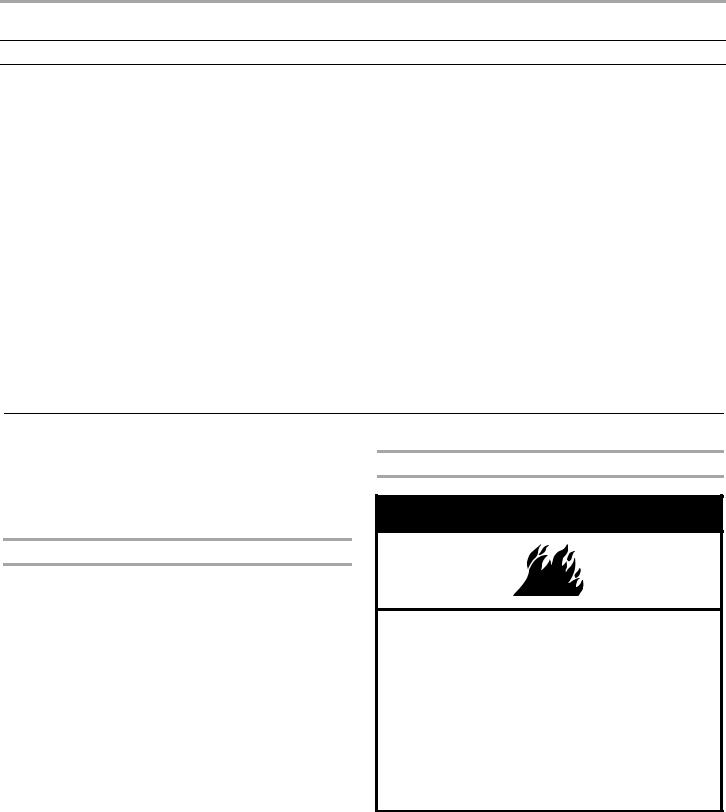
Minimum Clearance to Combustibles Chart
All measurements in inches (centimeters)
Horizontal Installations (Models WFAR and WFLR only)
|
|
|
|
Airflow |
|
|
|
|
|
|
|
|
|
|
|
|
|
||
|
|
|
|
R to L |
|
L to R |
|
||
|
|
|
|
|
|
|
|
||
Cabinet Width |
Front |
Back |
Vent |
Top |
Bottom |
Top |
Bottom |
||
|
|
|
|
|
|
|
|
|
|
14¹⁄ (36.9) |
4 (10.2)1 |
0 |
6 (15.2)2 |
3 |
(7.6)2 |
0 |
3 |
(7.6)1 |
3 (7.6)2 |
|
|
|
|
|
|
|
|
|
|
17¹⁄ (44.4) |
4 (10.2)1 |
0 |
6 (15.2)2 |
2 |
(5.1)2 |
0 |
2 |
(5.1)2 |
2 (5.1)2 |
|
|
|
|
|
|
|
|
|
|
21 (53.3) |
4 (10.2)1 |
0 |
6 (15.2)2 |
1 |
(2.5) |
0 |
1 |
(2.5) |
0 |
|
|
|
|
|
|
|
|
|
|
24¹⁄ (62.3) |
4 (10.2)1 |
0 |
6 (15.2)2 |
1 |
(2.5) |
0 |
1 |
(2.5) |
0 |
|
|
|
|
|
|
|
|
|
|
1May be 2" (5.1 cm) when Type B-1 vent pipe is used.
2May be 1" (2.5 cm) when Type B-1 vent pipe is used.
3Where values greater than 0 are shown, may be 0" when Type
■High Altitude Installations
■This furnace is approved for operation at altitudes from 0 to 4,500 ft (1,371.6 m) above sea level without any required modifications.
■From 4,500 to 7,500 ft (1,371.6 m to 2,286 m), the gas manifold pressure needs to be adjusted according to the information shown in the Manifold Pressure vs. Altitude charts.
B-1 vent pipe is used.
IMPORTANT:
For installations above 7,500 ft (2,286 m), the furnace input rate is to be reduced per the requirements of the National Fuel Gas Code (ANSI Z223.1/NFPA 54, latest edition), at the rate of 4 percent for each 1,000 ft (305 m) above sea level.
The furnace is not recommended for installation above 10,000 ft (3,048 m).
Installation Configurations
Models WFAU and WFLU must be installed only as an upflow furnace. Models WFAT and WFLT may be installed as an upflow or horizontal furnace. Models WFAR and WFLR may be installed as either a counterflow or a horizontal furnace.
Models WFAR, WFLR, WFAT and WFLT furnaces can be horizontally installed for airflow right to left or left to right.
Upflow Installations
WFAU, WFLU, WFAT and WFLT model furnaces can be installed with either a side or bottom air return. For bottom air return the bottom air return knockout plate must be removed. For units that do not include a side or bottom return filter rack, kit no. AFILT524-1 (side return) or kit no. AFILT529-1 (bottom return) can be used.
To provide sufficient filter area for installations requiring more than 1,600 CFM nominal air delivery, return air will have to be brought through both sides of the furnace, or through one side and the bottom, or an optional filter rack WAFILTHA7 may be used.
Installation for Counterflow (Downflow) Models
 WARNING
WARNING
Fire Hazard
Before installing counterflow (downflow) furnace on combustible surface, such as wood, install one of the following kits:
WABASE 511 (14.5" cabinets)
WABASE 512 (17.5" cabinets)
WABASE 568 (21" cabinets)
WABASE 569 (24.5" cabinets)
Contact your local dealer.
Failure to do so can result in death or fire.
IMPORTANT:
■The furnace may be installed directly on the supply plenum or coil cabinet if the furnace is installed on a noncombustible floor.
5
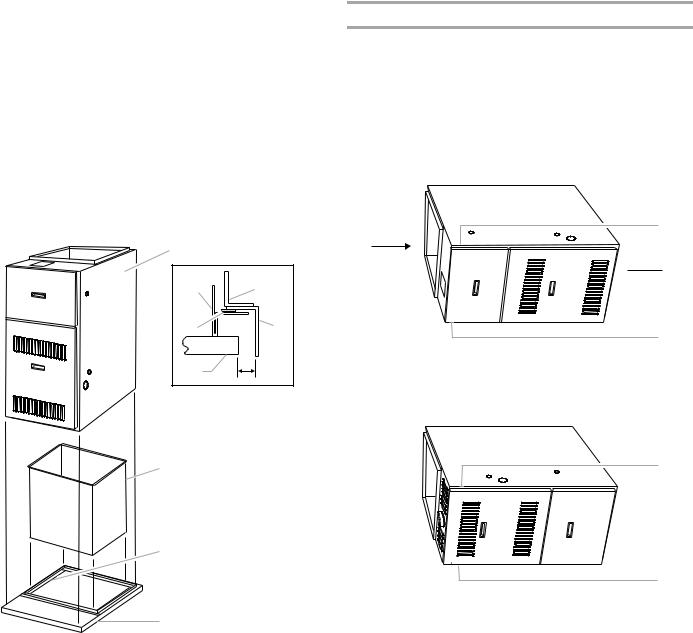
■For installations on combustible flooring, a special base must be ordered and used. See “Accessories.”
1.Cut, size and frame opening in floor to fit the Combustible floor base and provide a minimum 1" (2.5 cm) clearance between the supply duct and combustible materials. The 4 legs on the base assembly should be recessed into the floor, and the base should rest on all 4 outside flanges.
2.Construct duct connections with 1" to 1³⁄" (2.5 cm to 4.4 cm) right angle flanges, and long enough to extend below the floor joists.
3.Drop the duct connections through the top of the base assembly with the right angle flanges in good contact with the glass tape on top of the base assembly.
4.Position the furnace over the right angle duct flanges.
Combustible Floor Installation (Counterflow Models only)
B
A |
B |
E |
C |
D |
1" |
|
C
E
|
A |
A. Base assembly |
D. Combustible floor |
B. Furnace |
E. Woven glass tape (between |
C. Outlet duct (drops into base |
flanges of outlet duct and |
assembly) |
base assembly) |
Horizontal Installations
WFAR, WFLR, WFAT and WFLT model furnaces can be horizontally installed for airflow right to left or left to right. To ensure access to parts for servicing, install upflow and counterflow furnaces so that the burner and blower access panels are readily accessible.
NOTE: When installed horizontally, the installer must install a sheet metal screw to retain the upper door as shown following, in either Position B or D, depending on installation configuration.
Horizontal Installation (WFAR and WFLR models)
B
A
 C
C
D
A. Return |
C. Supply |
B. Screw placement for |
D. Screw placement for |
Left to Right airflow |
Right to Left airflow |
Horizontal Installation (WFAT and WFLT models)
B
A 
 C
C
D
A. Supply |
C. Return |
B. Screw placement for |
D. Screw placement for |
Right to Left airflow |
Left to Right airflow |
Horizontal Installation—Suspended
WFAR, WFLR, WFAT and WFLT model furnaces may be installed as suspended units in the horizontal position. These furnaces are not designed for direct attachment of suspension rods to the furnace casing.
■The suspending means must be field fabricated, and should consist of two “cradles” made by attaching 2 rods to a length of angle iron or suitable gauge steel.
■Locate the cradles so that they are as close as possible to the ends of the furnace (this will provide access for removal of major components such as the blower assembly).
■Provide enough clearance between the suspension rods and the furnace to allow removal of access panels.
6
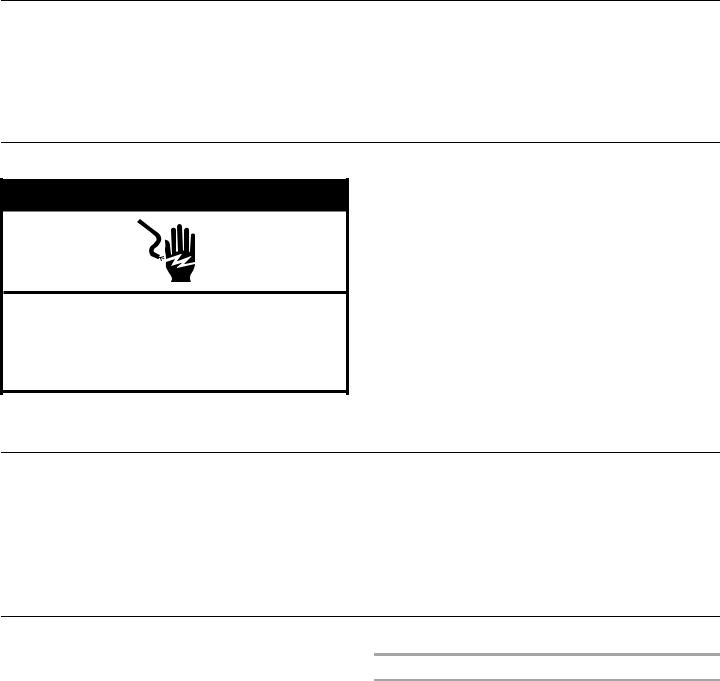
Ductwork Requirements
■Install all conditioned air plenums, ducts and air filters (if not provided on the furnace) in accordance with NFPA 90B Standard for the Installation of Warm Air Heating and AirConditioning Systems (latest edition).
■The furnace is provided with flanges for the connection of the plenum and ducts.
■All air filters must be listed as Class 2 furnace air filters.
■All ductwork must be made of materials and insulated to meet local, state and national codes. Ductwork installed outdoors must be sealed, weatherproofed and protected against physical damage. Caulking, flashing or other means of adequately providing a permanent weather seal should be used where duct penetrates a building or structure opening.
Electrical Requirements
 WARNING
WARNING
Electrical Shock Hazard
Electrically ground furnace.
Connect ground wire to green ground screw.
Failure to do so can result in death or electrical shock.
■The furnace must be grounded and wired in accordance with local codes or, in the absence of local codes, with the National Electrical Code ANSI/NFPA No. 70 (latest edition).
■In all instances, other than wiring for the thermostat, the wiring to be done and any replacement of wire shall conform with the temperature limitation for Type T wire (63°F [17ºC] rise).
■The line voltage supply should be routed through a readily accessible disconnect located within sight of the furnace. A junction box on the furnace side panel is provided for line voltage connections. See the Wiring Connection Diagram in the “Troubleshooting” section for specific connection information.
■Proper polarity of the supply connections (“HOT” and “NEUTRAL”) must be observed to be sure that the control system provides the protection intended.
Gas Supply Requirements
This furnace is equipped for use with Natural gas. A conversion kit is required for use with propane. To order the correct conversion kit, see “Accessories.”
■Gas supply piping should be installed in accordance with local, state and national codes and the regulations of the utility. Piping must be of adequate size to avoid undue pressure drop. Consult the local utility or gas supplier for complete details on special requirements for sizing gas piping.
■If local codes allow the use of a flexible gas appliance connector, use a CSA design-certified outdoor flexible stainless steel appliance connector or rigid gas supply line as needed. Do not use a connector which has previously serviced another gas appliance.
Venting Requirements
Adequate provisions for combustion air and ventilation of furnace must be made. Refer to Section 5.3, “Air for Combustion and Ventilation,” of the National Fuel Gas Code, ANSI Z223.1/NFPA54 (latest edition), or applicable provisions of the local building codes. For Category 1 furnaces, vent installations shall be in accordance with parts 7 and 11 of the National Fuel Gas Code, ANSI Z223.1/NFPA 54, the local building codes, and the furnace and vent manufacturer’s instructions.
Existing Venting Systems
When an existing furnace is removed or replaced, the original venting system may no longer be sized to properly vent the attached appliances. An improperly sized venting system can result in the spilling of flue products into the living space, the formation of condensate, leakage, etc. See the “Carbon Monoxide Poisoning Hazard” for proper test procedure.
7
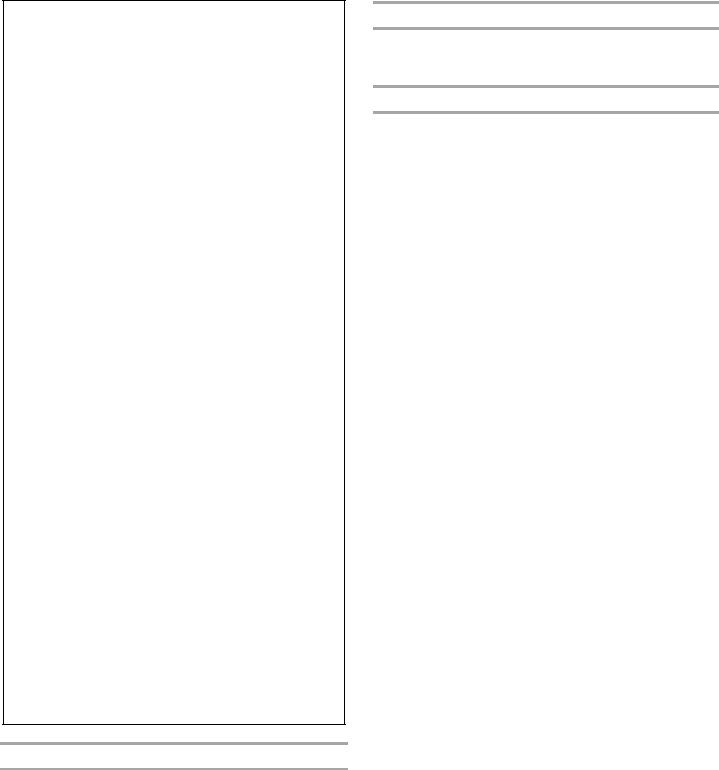
 WARNING:
WARNING:
CARBON MONOXIDE POISONING HAZARD
Failure to follow the steps outlined below for each appliance connected to the venting system being placed into operation could result in carbon monoxide poisoning or death.
The following steps shall be followed for each appliance connected to the venting system being placed into operation, while all other appliances connected to the venting system are not in operation:
1.Seal any unused openings in the venting system.
2.Inspect the venting system for proper size and horizontal pitch, as required in the National Fuel Gas Code,
ANSI Z223.1/NFPA 54 or the CSA B149.1, Natural Gas and Propane Installation Codes and these instructions. Determine that there is no blockage or restriction, leakage, corrosion and other deficiencies which could cause an unsafe condition.
3.As far as practical, close all building doors and windows and all doors between the space in which the appliance(s) connected to the venting system are located and other spaces of the building.
4.Close fireplace dampers.
5.Turn on clothes dryers and any appliance not connected to the venting system. Turn on any exhaust fans, such as range hoods and bathroom exhausts, so they are operating at maximum speed. Do not operate a summer exhaust fan.
6.Follow the lighting instructions. Place the appliance being inspected into operation. Adjust the thermostat so appliance is operating continuously.
7.Test for spillage from draft hood equipped appliances at the draft hood relief opening after 5 minutes of main burner operation. Use the flame of a match or candle.
8.If improper venting is observed during any of the above tests, the venting system must be corrected in accordance with the National Fuel Gas Code, ANSI Z223.1/NFPA 54 and/or CSA B149.1, Natural Gas and Propane Installation Codes.
9.After it has been determined that each appliance connected to the venting system properly vents when tested as outlined above, return doors, windows, exhaust fans, fireplace dampers and any other gas-fired burning appliances to their previous conditions of use.
Unconfined Space
An unconfined space is defined as “a space whose volume is more than 50 cu. ft (1.4 m3) per 1,000 Btu/h of the combined input rating of all appliances installed in that space.”
When a furnace is installed in an unconfined space in a building, it can be assumed that the infiltration will be sufficient to supply the required air.
If the furnace is installed in a ventilated attic or crawl space, it is assumed that the air infiltration is sufficient to supply the required combustion air. However, in a building of unusually tight construction, additional outdoor air should be provided.
Confined Space
A confined space is defined as “a space whose volume is less than 50 cu. ft (1.4 m3) per 1,000 Btu/h of the combined input rating of all appliances installed in that space.”
Contaminated Combustion Air
Excessive exposure to contaminated combustion air will result in performance-related problems. The recommended source of combustion air is outdoor air.
Outdoor air as the source of combustion air
If the furnace is installed in a confined space, it is recommended that the necessary combustion air come from the outdoors by way of an attic, crawl space, air duct, or direct opening.
Outdoor air is required as the source of combustion air when the indoor air is contaminated with chemical substances and in the following types of installations:
■Furnaces installed in commercial buildings
■Furnaces installed in buildings with indoor pools
■Furnaces installed in hobby or craft rooms
■Furnaces installed near chemical storage areas
■Furnaces installed in laundry rooms
■Furnaces installed in hair salons
Indoor air as the source of combustion air
Indoor air as the source of combustion air is acceptable in most applications if the following guidelines are met:
■All provisions for indoor combustion air must meet the requirements for combustion air indicated in the National Fuel Gas Code, ANSI Z223.1/NFPA 54 (latest edition), and/or any applicable local codes.
■If indoor combustion air is used, the air supply to the furnace should not be exposed to the following substances:
Permanent wave solutions Chlorinated waxes and cleaners
Chlorine-based swimming pool chemicals Water softening chemicals
Deicing salts or chemicals Carbon tetrachloride Halogen-type refrigerants
Cleaning solvents (such as perchloroethylene) Printing inks, paint removers, varnishes, etc. Cements and glues
Antistatic fabric softeners for clothes dryers Masonry acid washing materials Chlorinated laundry products
Hydrochloric acid
8
